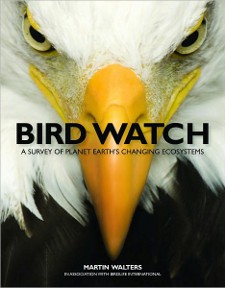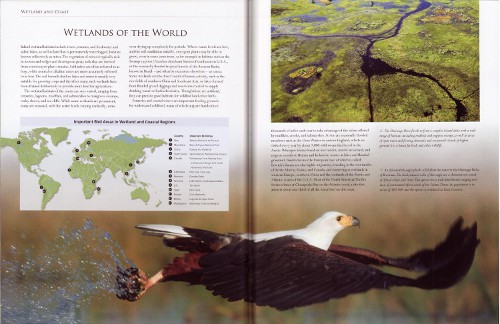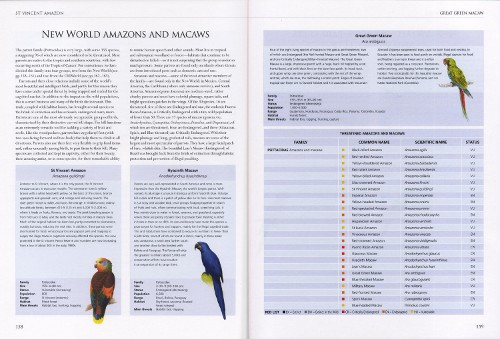Reviewed by Grant McCreary on August 10th, 2011.
Earlier this year, in my review of The American Bird Conservancy Guide to Bird Conservation – an excellent summary of conservation in the Americas – I wished that a similar resource were available for the rest of the world. Bird Watch: A Survey of Planet Earth’s Changing Ecosystems comes close.
Bird Watch covers the same topics as the ABC guide – threats to birds, habitats, profiles of threatened birds, and conservation efforts – but less comprehensively. This is partly due to the increased scope (the world vs. the United States), but the focus of the book is also different. Walters concentrates primarily on ecosystems, their threatened birds, and what the birds can tell us about the health of our planet.
Eight major habitats are covered, from wetlands to deserts, islands to mountains. Several examples of each are given, describing the location’s specific geographic characteristics, birds, and threats. Rare and endangered birds are given special consideration. Each habitat chapter has one or more extended sidebars that profile a specific location or bird. Aside from being informative and interesting, these profiles serve to provide some concrete examples in a book that is otherwise more general.
Following the ecosystem overviews is a catalog of the world’s endangered birds. All 1,227 species on the IUCN Red List (at the time of publication, unfortunately there are more now) are listed by family in taxonomic order. Each family is given a brief introduction, recounting its unique characteristics, range, the number of species it has, and how many are considered to be threatened. A table lists these threatened birds, and a few are individually profiled.
The tables display the family, red list status (endangered, vulnerable, etc), and common and scientific names. To me, that’s not enough information. They would be much more useful if range (just countries would be fine) and population estimates, for example, were added. The species profiles are much more informative, providing a painted illustration, range, population estimates, and much more information about the bird and its main threats. The illustrations are sufficient for their purpose – giving an idea of what the bird looks like – but I wasn’t impressed overall. Bali Starlings are beautiful birds, but the illustration here makes them look downright ugly. Still, these profiles are helpful in grasping what birds are endangered and why; I wish there were more of them.
Bird Watch is a visually stunning book! If the bird illustrations are less than impressive, the photographs of birds and habitats more than make up for it. Plus, the layout and design are superb.
Recommendation
Bird Watch is “an illustrated tour” of the world’s endangered ecosystems and birds, with the underlying message that they are worth conserving. It is more of a broad survey and sampler than a comprehensive guide, and is thus recommended to anyone looking for an introduction to these subjects.
Disclosure: I get a small commission for purchases made through links in this post.
Disclosure: The item reviewed here was a complementary review copy provided by the publisher. But the opinion expressed here is my own, it has not been influenced in any way.







Comment